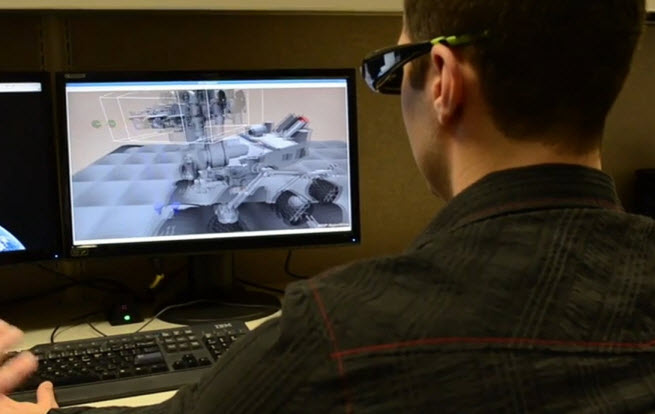NASA’s scientists have taken advantage of 3D graphics and game-like simulations to figure out how to control the rover Curiosity on the rocky Martian landscape.
Nvidia’s Ken Brown said today on the graphics chip maker’s blog that the Jet Propulsion Laboratory had to use 3D vision technology (stereoscopic 3D glasses) to figure out how to control the expensive Curiosity explorer from 352 million miles away. It’s a cool dual use of technology for gaming and science. Besides, the huge volume of game PCs and graphics cards sold on the commercial market helps pay for high-end research and development into advanced graphics, which is just what folks such as the JPL researchers need.
Since it takes at least 14 minutes to get a signal to Mars, the Curiosity can’t be operated the same way you drive in Mario Kart 7. By the time a driver sees an obstacle on the rocky landscape, it may be too late to stop.
So the team at JPL in Pasadena, Calif., created a simulated environment, like a video game, to test each action before telling the rover to move. The Robot Sequencing and Visualization Program, or RSVP, is a 3D virtual environment with Martian terrain captured by the rover. The scientists created a detailed 3D model of Curiosity and viewed it within the landscape using off-the-shelf 3D Vision glasses. They then map out complex movements for operating things such as Curiosity’s robotic arm. Each day, the JPL team plots a path of about 130 feet.
The team can see the simulated movement in real time, thanks to Nvidia Quadro 5000 graphics cards in a PC that a gamer would love to have.
[Image credit: JPL/Gizmodo]




